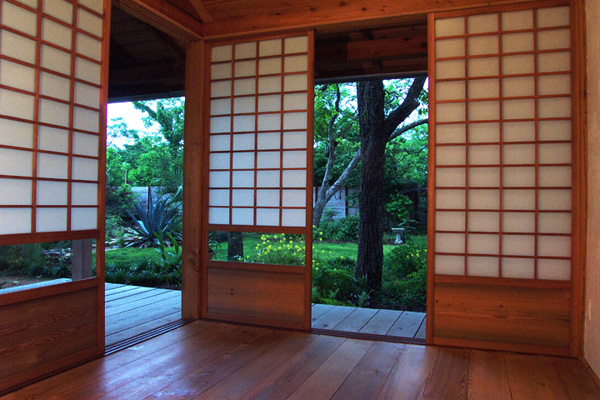Don’t get it mixed with the Japanese martial Art or fencing game – Crossword clue Japanese fencing, often referred to as Shoji, a distinctive feature of traditional Japanese architecture. It has evolved into a versatile element used in both interior and exterior designs. You will mostly find this in Japan; the rest of the world barely adopted these styles. Shoji offers both practical and aesthetic benefits, blending beauty with functionality.
In this blog, we’ll explore what Shoji is, its history, and what are the planning permission to install fencing in the UK.
Table of Contents
What is Shoji ( Crossword Clue Japanese Fencing)?
Japanese houses normally use Shoji as their sliding doors or screens. Made from pine, Shoji uses a wooden frame with rice paper stretched over it. The thin paper lets light pass through but keeps people from seeing inside. People use Shoji screens both as room dividers and for doors, windows, and garden fences.
How Long Do Wooden Fence or Gate Posts Last? UK Guide
Dating Back To the History of Shoji
Shoji screens appeared first in Japan during the Heian period (794–1185), then grew very popular over the centuries as people redesigned their homes. Shoji first helped people separate rooms without using up space and while still letting sunlight come through. As time passed, what began as a tool for dividing rooms inside houses now helped create Japanese gardens and acts as a decorative fence for outdoor areas. The Japanese used this fencing to make their homes look more elegant while keeping the standard practice of connecting house areas with outdoor nature.
Shoji as Fencing in Japanese Homes
You will see Shoji fencing mostly in private or garden areas, often surrounding traditional gardens and homes in Japan. These are made from wood and paper frames as stylish indoor Shoji screens, these outdoor versions allow for both visual transparency and privacy. The soft, light that passes through the paper adds a crystallising and serene atmosphere.
This type of fencing is particularly popular in Japan because it maintains the Zen philosophy of creating a harmonious relationship between indoor and outdoor environments. The fencing not only serves as a protective barrier but also provides an opportunity for homeowners to enjoy the beauty of their garden, even from inside the house.
Front Garden Fences: Elevate Your Curb Appeal and Security
Benefits of Shoji Fencing
- Aesthetic Appeal: Shoji fencing brings a beautiful, simple design that makes your home and garden look better.
- Privacy: The paper screens both protect your privacy and let light come through, giving your space a warm, gentle glow.
- Natural Light: Shoji screens and fencing let sunlight come through, making rooms feel bright without the blinding effects of direct sunlight.
- Space Efficiency: Shoji’s sliding design means you can move it around without effort, giving you many possible ways to arrange your space.
Modern Use of Shoji Fencing

While Shoji originated in traditional Japanese homes, it has found its way into contemporary design as well. Many modern homes, especially those inspired by Japanese aesthetics, incorporate Shoji screens and fencing into their exterior designs. The rise of minimalist design worldwide has led to an appreciation for Shoji’s delicate balance of form and function.
In addition to residential properties, Shoji fencing is also gaining popularity in commercial spaces, including restaurants, spas, and garden areas, where it enhances the sense of calm and tranquillity. The timeless quality of Shoji continues to inspire designers around the globe, creating spaces that connect people with nature and encourage mindfulness.
Planning Permission for Installing Fencing In the UK
If you want to install fencing of different designs and different materials, some of the restrictions are protecting the neighbour’s rights that you must be aware of. Town and Country planning deals with such kinds of issues, that involve social rights, privacy and legal boundaries as well.
Find the artwork of workers and highlights from our projects here.
Town and Country Planning (General Permitted Development) Order 2015
In the UK, fences up to 2m high do not require planning permission, except where the fence is next to a public highway (the height limit for a wall on a public road is 1m).
The order was first Introduced in 2015 and became an important part of planning regulations.
The Party Wall Act 1996
The UK Parliament passed the Act that was introduced in 1996, Council Fencing Laws England enforced it. This Act governs shared boundaries between neighbouring properties. If your neighbour wishes to change a party wall or shared boundary fence, he must first be notified before work begins.
The Highways Act 1980
The UK Government passed the law to control how people build fences and other road features near public roads. It was introduced in 1980. The law stops people from putting up some specific types of fences along public roads and says they must use safe fence materials like barbed wire.
UK Boundary Disputes Protocol
The Boundary Disputes Protocol was introduced by the Ministry of Justice in 2009. It is also a protocol to resolve boundary disputes between neighbours. It promotes peaceful resolution through things like consulting with the Land Registry for boundary info before taking any legal action or mediation.
Conclusion
Shoji, a common Japanese architectural design, serves the dual purpose of keeping you hidden while bringing in beautiful sunlight and making your space look nice. Japanese builders first used Shoji as both sliding doors and wall partitions within their houses. Today, its simple look guides new home designs. But if you want to have that style of fencing in your house in the UK, You’ll need planning permission.Buon Construction helps customers with home extension work, kitchen and bathroom updates, and complete property makeovers. We create personalised designs to make your home better, and we’re here to help you achieve your goals. Contact us today to start your next project.

